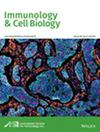识别细胞疗法产品中重新活化的病毒病原体的新方法。
IF 3.2
4区 医学
Q3 CELL BIOLOGY
引用次数: 0
摘要
在本文中,我们将讨论最近发表的一篇文章,该文章展示了一种识别在人体细胞中重新活化的病毒病原体的新方法,这种病毒病原体可用作细胞疗法,例如嵌合抗原受体(CAR)T 细胞。作者利用搜索引擎和数据库找出了能在T细胞中再活化的病毒,然后在T细胞培养物中进行了初步测试,特别是人类疱疹病毒6。结果表明,由于 T 细胞活化,这种病毒在体外和体内的 CAR T 细胞中都很少再活化。这种方法在其他类型的细胞疗法(如异基因 CAR T 细胞或诱导多能干细胞)中可能对更频繁重新激活的病毒最有临床用途。本文章由计算机程序翻译,如有差异,请以英文原文为准。
A new way of identifying viral pathogens reactivating in cellular therapy products
In this article, we discuss a recently published article that demonstrated a novel way of identifying viral pathogens reactivating in human cells to be used as cellular therapy, in this instance chimeric antigen receptor (CAR) T cells. The authors used search engines and databases to identify viruses able to reactivate in T cells and then tested this initially in T-cell cultures, specifically human herpesvirus 6. This virus was then shown to reactivate infrequently in vitro and in vivo in CAR T cells as a consequence of T-cell activation. The methodology may be most clinically useful for more frequently reactivating viruses in other types of cellular therapy such as allogenic CAR T cells or induced pluripotent stem cells.
求助全文
通过发布文献求助,成功后即可免费获取论文全文。
去求助
来源期刊

Immunology & Cell Biology
医学-免疫学
CiteScore
7.50
自引率
2.50%
发文量
98
审稿时长
4-8 weeks
期刊介绍:
The Australasian Society for Immunology Incorporated (ASI) was created by the amalgamation in 1991 of the Australian Society for Immunology, formed in 1970, and the New Zealand Society for Immunology, formed in 1975. The aim of the Society is to encourage and support the discipline of immunology in the Australasian region. It is a broadly based Society, embracing clinical and experimental, cellular and molecular immunology in humans and animals. The Society provides a network for the exchange of information and for collaboration within Australia, New Zealand and overseas. ASI members have been prominent in advancing biological and medical research worldwide. We seek to encourage the study of immunology in Australia and New Zealand and are active in introducing young scientists to the discipline.
 求助内容:
求助内容: 应助结果提醒方式:
应助结果提醒方式:


